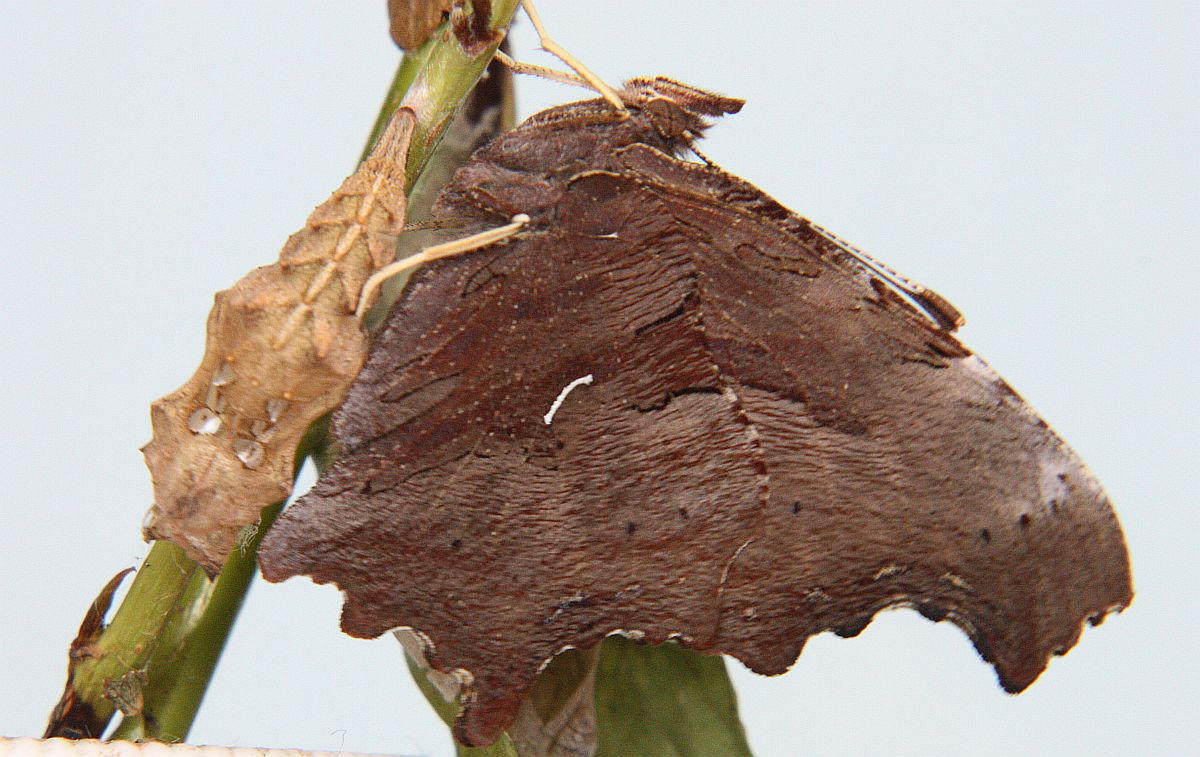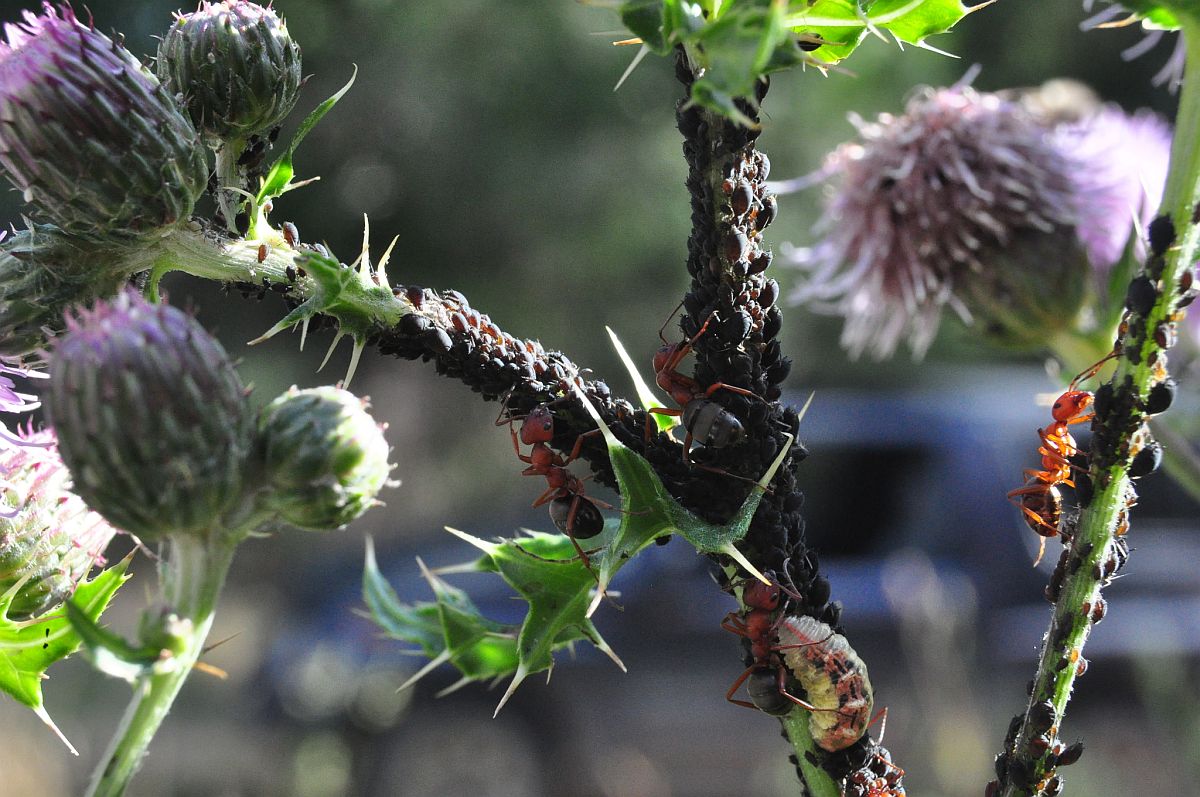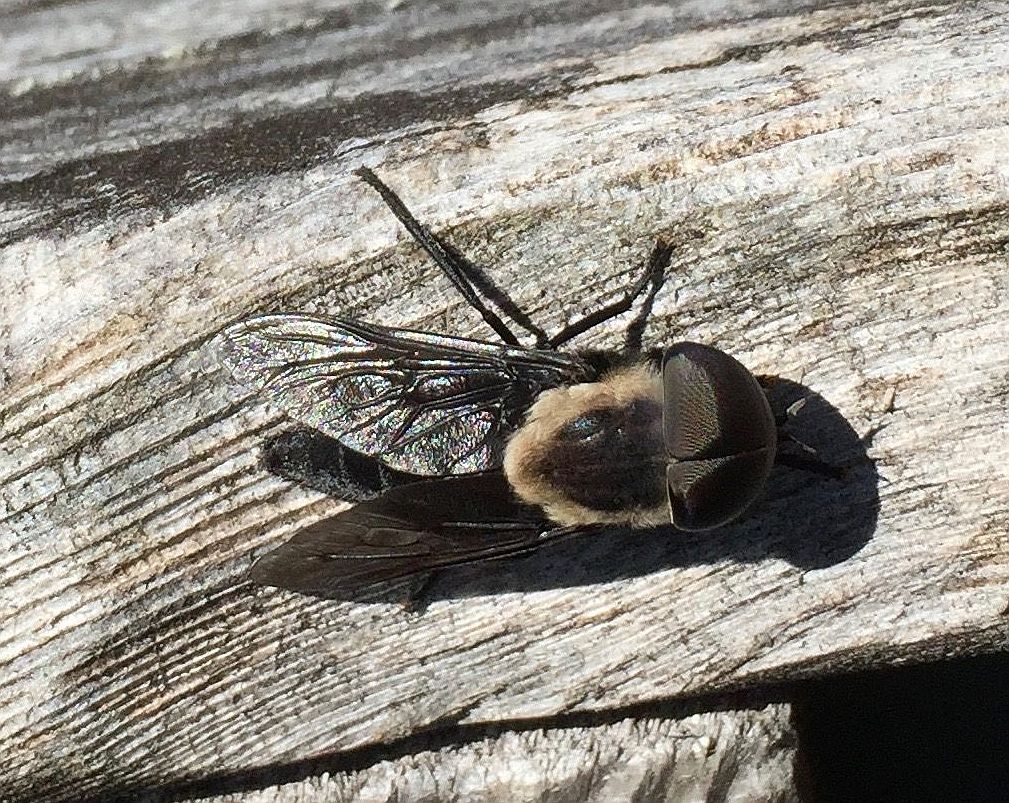July 1
2016 July 1
Monthly Butterfly Walk. All are welcome. We meet this Sunday, July 3, at 10:00 a.m. (note the change in time), at the top of Mount Tolmie. We usually discuss where we will go when we meet. It is very weather-dependent, of course, and if the weather is bad it may have to be cancelled. But if the weather is good, one possibility is Cowichan Station, to see if we can see the Margined White.
Jeremy Tatum writes: A Satyr Comma ecloded (emerged) this morning from the chrysalis shown on June 21. You can see the empty chrysalis case to the left of the butterfly. This is a female. The underside of the male has a much more “scribbly” pattern, and a thicker, more “ear-shaped” white mark. I released the butterfly this morning on bramble blossom on Lochside Drive north of Blenkinsop Lake. It is the first adult Satyr Comma that I have seen this year.

The interesting photograph below was taken by Andrew Simon. The aphids are being “farmed” by the ants, who enjoy the sweet “honey dew” that the aphids exude. The aphids are said to obtain some advantage from the ants, which protect them from predators. Well, there is a predator at the bottom of the photograph. The pale slug-like creature there is the maggot of a hoverfly (Syrphidae), and these syrphid larvae are among the most voracious predators of aphids. Do you think the ant that is partially straddling the maggot is doing its job?
We have four organisms to identify in the photograph. I think the botanists may agree that the thistle is the Canada Thistle Cirsium canadensis, also known as Cirsium arvense. In spite of its English and scientific names, I believe it is a European invader, and not a native species. I don’t know if we can find anyone to identify the ants or the aphids for us. The fly larva would seem to be even more of a challenge, but Dr Jeff Skevington exceeded my expectations and has gone down to Subfamily level – it’s in the Subfamily Syrphinae.

Ants, aphids, and a syrphine maggot
Ren Ferguson writes, from Salt Spring Island: Attached is a photo of what I think would be a species of fly? Anyway, I have never seen this critter before and was hoping for some help in identifying it. It landed on the railing of our deck here on Salt Spring Island on June 29. That is a large body percentage given over to compound eyes!
Jeremy Tatum responds: I am absolutely and genuinely terrified of tabanid flies, and I experienced that feeling of terror as soon as I saw the photograph, from which I deduce that it is a tabanid fly. Thanks to Claudia Copley for idenifying it as Tabanus punctifer.

